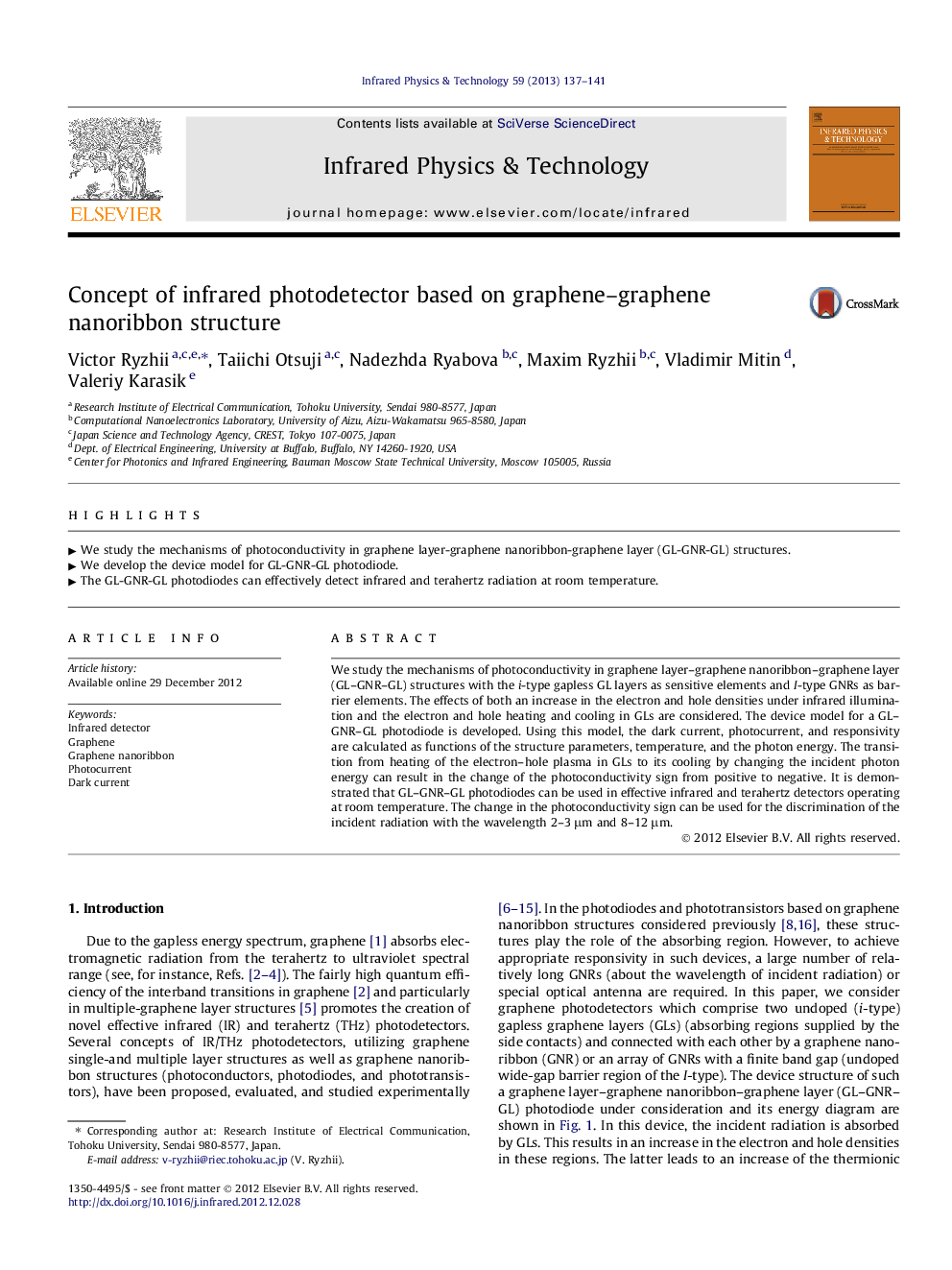| Article ID | Journal | Published Year | Pages | File Type |
|---|---|---|---|---|
| 1784563 | Infrared Physics & Technology | 2013 | 5 Pages |
We study the mechanisms of photoconductivity in graphene layer–graphene nanoribbon–graphene layer (GL–GNR–GL) structures with the i-type gapless GL layers as sensitive elements and I-type GNRs as barrier elements. The effects of both an increase in the electron and hole densities under infrared illumination and the electron and hole heating and cooling in GLs are considered. The device model for a GL–GNR–GL photodiode is developed. Using this model, the dark current, photocurrent, and responsivity are calculated as functions of the structure parameters, temperature, and the photon energy. The transition from heating of the electron–hole plasma in GLs to its cooling by changing the incident photon energy can result in the change of the photoconductivity sign from positive to negative. It is demonstrated that GL–GNR–GL photodiodes can be used in effective infrared and terahertz detectors operating at room temperature. The change in the photoconductivity sign can be used for the discrimination of the incident radiation with the wavelength 2–3 μm and 8–12 μm.
► We study the mechanisms of photoconductivity in graphene layer-graphene nanoribbon-graphene layer (GL-GNR-GL) structures. ► We develop the device model for GL-GNR-GL photodiode.► The GL-GNR-GL photodiodes can effectively detect infrared and terahertz radiation at room temperature.
